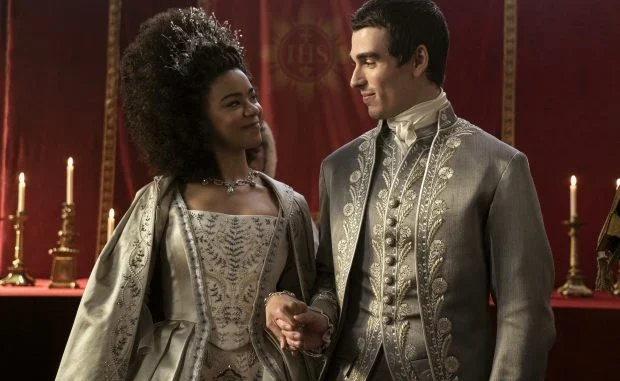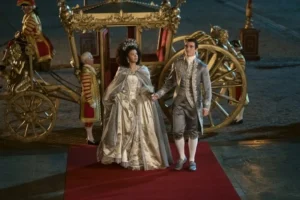
Queen Charlotte: A Bridgerton Story fictionalises the early life of one of the most beloved characters in Bridgerton, the fierce and formidable Charlotte of Mecklenburg-Strelitz. Polly Putnam, the show’s historical advisor, discusses the real history behind the show, and why the Georgians remain so relevant to us today
Period drama fans will be glued to their screens this week as Netflix releases their latest show set in the Bridgerton universe – Queen Charlotte: A Bridgerton Story. Created by showrunner Shonda Rhimes, the series acts as a prequel exploring the early life of one of the main season’s most-loved characters – the formidable Queen Charlotte.
It fictionalises the real story of Charlotte of Mecklenburg-Strelitz, a young woman who is shipped off to marry the king of England, George III, and comes to realise that things are not as they first appear in the royal household. Polly Putnam, Collections Curator at Historic Royal Palaces, acted as a historical advisor on the series, and she spoke to Ellie Cawthorne on the HistoryExtra podcast about the real inspirations behind the show.
The show opens with a message that reads: “Dearest Gentle Reader, this is the story of Queen Charlotte from Bridgerton. It is not a history lesson. It is fiction inspired by fact, and all liberties taken by the author are quite intentional.”
What is it like to be a historical advisor on a show that that knowingly and intentionally moves away from real history?
It was fascinating! My first task was to write a series of reports for showrunner and creator Shonda Rhimes on Queen Charlotte, George and George’s period of mental and physical illness. As our conversations continued, she referred to this as her “canon”. But she was very clear from the off that because the series is set in “Bridgerton-land” and not the real past, that this was going to be a work of fiction. I like to think of it as historical fan-fiction, because it’s been written with a lot of respect and love for the history and great empathy for the characters.
One of my main jobs was to give Shonda information that was inspiring. In an early scene we see the wedding of George and Charlotte, so for reference I showed Shonda a sketch of the ceremony by Joshua Reynolds, which today hangs in Kew Palace. The fact that that scene is so obviously inspired by a picture is really lovely, and there are details throughout which are informed by historical material I provided to Shonda. But she’s also had fun with it, and I think that’s something that you can’t be snobby about. You just have to take it for what it is.
What do you think the series captures well about the real history?
In my job as a Collections Curator at Historic Royal Palaces, I look after Kew Palace, the home of George and Charlotte. It’s been amazing to see these characters brought to life, and to be introduced to people like the king’s mother Princess Augusta, who I think we’re seeing on screen for the first time here.

One of the most exciting things has been to see a version of George III that we’ve never seen before. We’ve only really seen him on screen as an infirm old man, but the George we meet in this depiction is active, young and with a love of science. Probably my favourite fact I gave to Shonda was that he was known as ‘farmer George’ due to his love of agriculture. I told her to feel free to include some sexy topless farming!
So apart from the sexy topless farming, what makes the story of George and Charlotte such great material for a drama?
There’s a shadow of mental illness cast over this story, which I think is often the only fact that people know about George III, and the rest remains unknown.
I think it feels quite relevant too. In the previous two series of Bridgerton, we met Charlotte as this amazing strong woman who has to take care of her husband. Despite the fact these figures are royal and elevated, that’s compelling because it feels familiar. A lot of people today care for loved ones, or live with mental health issues themselves.
What was their marriage like before George’s bouts of mental illness – they had 15 children, but do we know if they had an intimate and affectionate relationship?
I think so. Within days of Charlotte arriving, George wrote how thrilled he was with his new wife, and one of the things that brought them together was music. Queen Charlotte brought two harpsichords across to England with her, and George played the flute. Music became one of their great shared passions, and in the early days of marriage they were at concerts the whole time.
